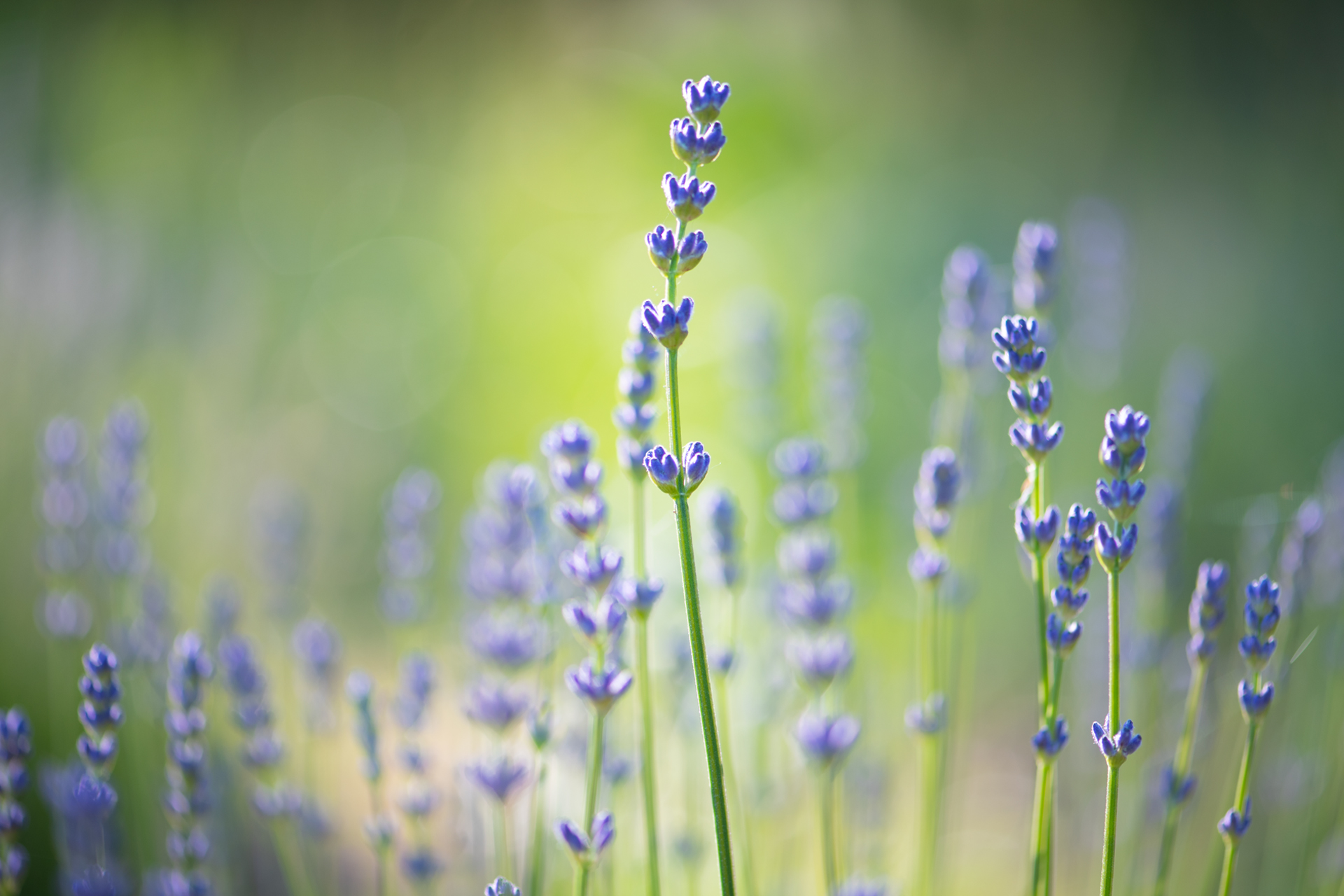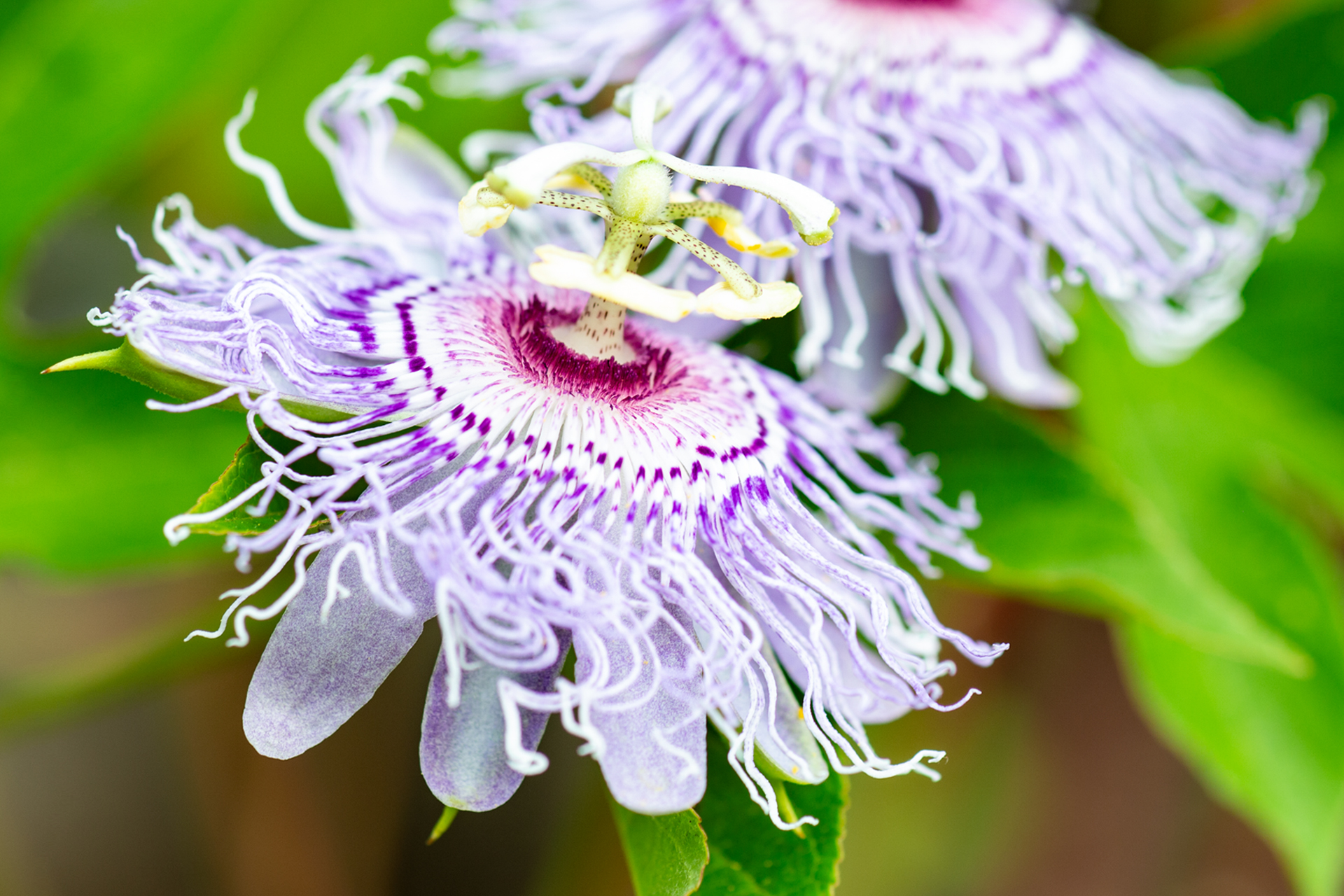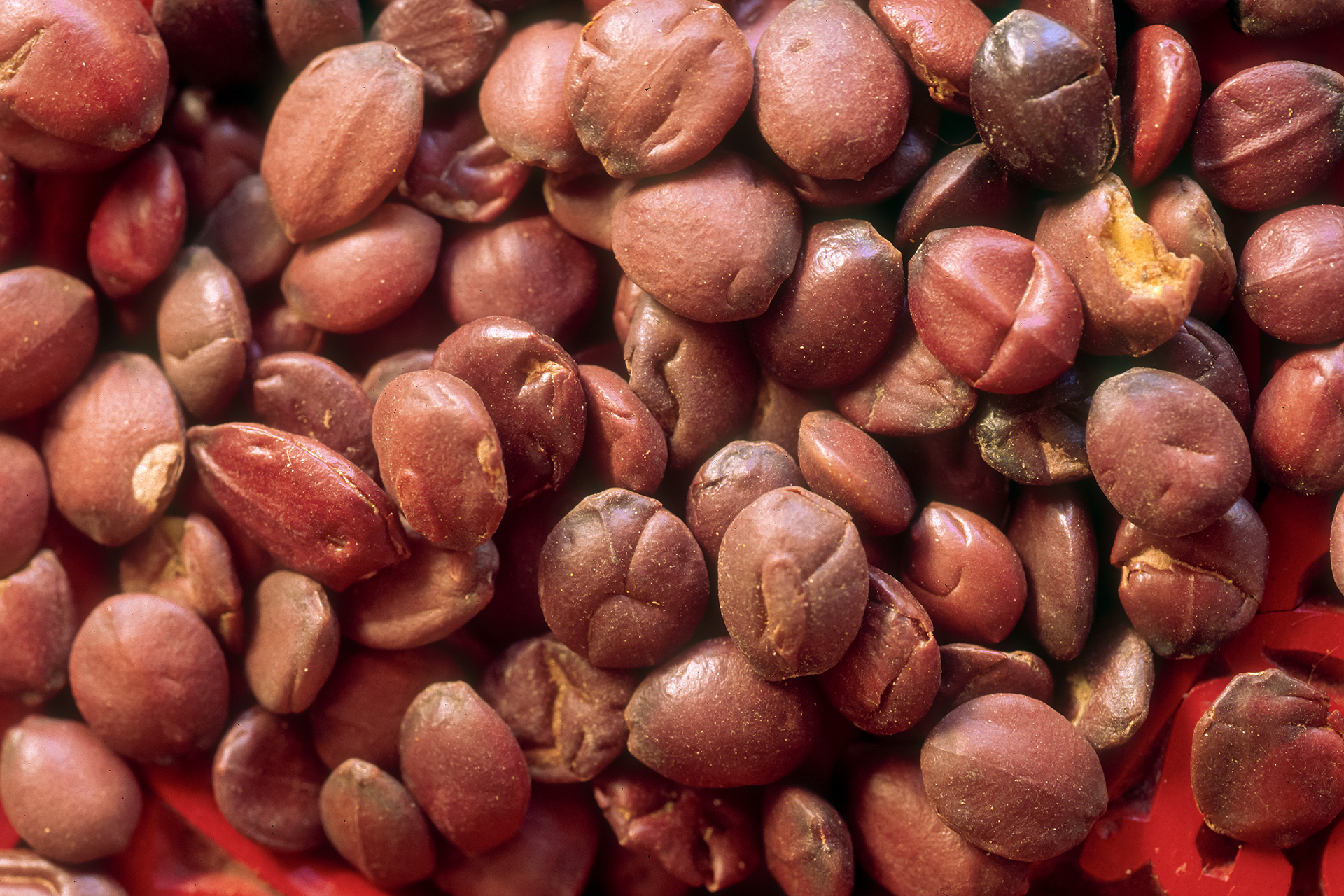As the saying goes, life is what happens when you’re making other plans. Thankfully, though, nature gives us options for rough days, long months and challenging moments.
We’re all in this together. That’s why we’re sharing eight of our favorite herbs for stress* and mild, occasional anxiety* — from Ashwagandha to Ziziphus and everything in between.
Ashwagandha
Ah, Ashwagandha. This plant has stories to share! Commonly used in Ayurveda (India’s traditional system of herbalism), it was believed to give the strength, stamina and character of a stallion. Its use dates back three to four millennia, as described in sacred Ayurvedic texts. Ashwagandha was considered a rasayana, which means it has been historically used as a rejuvenating tonic.*
Alexander the Great and his army turned bitter, slightly musky Ashwagandha into wine, which they used to traditionally support energy and vitality.* And legend has it the ancient Greek god Apollo gave this herb to his son Asclepius, believed to be a hero of health and well-being.
You’ll find Ashwagandha in products like Herbs on the Go: Daily Stress Balance™ and Adrena Soothe™. It’s also available in single herb form, as both Ashwagandha extract and Ashwagandha, Alcohol-Free.
Botanical name: Withania somnifera
Common name(s): Ashwagandha, Winter Cherry
Plant family: Solanaceae
Native habitat: India, Africa and the Mediterranean
Parts used: root
Use(s): Calming Ayurvedic herb traditionally used to promote a balanced response to stress.*
Flavor profile: bitter and slightly musky
Holy Basil
Another fabled herb in Ayurveda is Holy Basil, which derives its name from the respect it commands. In Hinduism, the herb — a relative of culinary Basil — is believed to represent the Divine Mother on Earth, to benefit all of creation. That’s why you’ll often see it growing in courtyards outside homes across India.
Auspicious as an herb can be, Holy Basil is also known as the “incomparable one.” Its fragrant scent is said to purify all who smell it and its essential oil repels insects, while its stems are turned into prayer beads.
You’ll find Holy Basil in products like Stress Manager™, Herbs on the Go: Daily Stress Balance™ and Adrena Nourish™ and as a single-herb extract.
Botanical name: Ocimum tenuiflorum
Common name(s): Holy Basil,Tulsi, Sacred Basil
Plant family: Lamiaceae
Native habitat: India
Parts used: herb
Use(s): A revitalizing Ayurvedic herb to support calm, focused energy and a balanced response to stress.*
Flavor profile: intensely aromatic, spicy and bittersweet
Kava
Kava is an herb fit for queens and popes! Native to islands across the South Pacific, including Fiji, Samoa, Tonga, Vanuatu, Papua New Guinea and Hawaii, this herb has been used to ceremonially welcome dignitaries, and the variety we use is actually called “noble.” Noble kava boasts more than 100 varieties, and they are older, with a rich and long history of use as food and beverages by humans.
Kava is also unique in that the plant is not self-reproducing, so propagation relies entirely on humans. It’s believed that the first Kava was propagated on Vanuatu over 3,000 years ago!
You’ll find Kava in products like Anxiety Soother™, Herbs on the Go: Anxious Moment™ and as a single herb extract.
Botanical name: Piper methysticum
Common name(s): Kava, Awa, Kava Kava, Kava Pepper, Yangona
Plant family: Piperaceae
Native habitat: South Pacific
Parts used: rhizome with root
Use(s): Traditionally used to support the nervous system.* Support for occasional & mild anxiety.* Promotes peaceful relaxation, reduces stress and frustration.*
Flavor profile: distinctively spicy, bitter, and slightly soapy flavor, accompanied by a numbing sensation
Rhodiola
Rhodiola grows in the wild in some of the coldest, harshest regions on Earth — including Siberia, the Arctic, parts of Canada and northern China. Beyond the low temperatures, these regions are also mountainous with tough, stony soil.
Rhodiola looks a little like a succulent, growing low to the ground with humble flowers and strong roots, which are the parts used in herbalism. (In conditions like those, a plant would need strong, sturdy roots to survive!) The young leaves and shoots can be eaten raw or cooked (or mixed with other greens) while the stems are cooked like Asparagus.
The roots smell like Roses, which is how Rhodiola earned both its botanical name (Rhodiola rosea) and the common name Roseroot. Its use spans cold climate cultures, from emperors in China and Mongolia to the Vikings of Scandinavia. It was even mentioned by the Greek physician Dioscorides as far back as 77 AD!
You’ll find Rhodiola in products like Adrena Uplift™, Herbs on the Go: Daily Stress Balance™ as well as Rhodiola extract and Rhodiola, Alcohol-Free.
Botanical name: Rhodiola rosea
Common name(s): Rhodiola, Arctic Rose, Golden Root, Roseroot
Plant family: Crassulaceae
Native habitat: Europe, specifically Scandinavia, Asia including Tibet and Siberia, Britain and North America
Parts used: root
Use(s): Supports a normalized stress response.*
Flavor profile: bittersweet with an astringent mouthfeel
Lavender
Beloved for its signature, potent fragrance and its delicate purple flowers, Lavender derives its name from the Latin word for “to wash,” a nod to its use in infusions by both ancient Greeks and Romans. It continues to be a popular fragrance, all these thousands of years later. Lavender is also a key ingredient in the Herbes de Provence blend from the region in France where it is widely grown.
The entire plant is fragrant, but the flowers are what’s used in herbalism. They bloom in June or July, and they’re harvested and carefully dried soon after. Lavender sachets are commonly used not only to infuse their wonderful scent into clothes but also to deter pesky moths that might feast upon them.
You’ll find Lavender in products like Herbs on the Go: Anxious Moment™, Herbs on the Go: Bed Time™ and Anxiety Soother™, as well as a single extract.
Botanical name: Lavandula angustifolia
Common name(s): Lavender, English Lavender, Common Lavender
Plant family: Lamiaceae
Native habitat: the Mediterranean region
Parts used: flower
Use(s): Traditionally used for calming support of the nervous system.* Traditionally used to lift the spirit and soothe mild, occasional anxiety.*
Flavor profile: intensely floral, aromatic and moderately bitter
Lemon Balm
Another Mint family member, Lemon Balm is particularly loved by wildlife and pollinators. In fact, the herb gets its genus name, Melissa, from the Greek word for “honeybee,” and it’s planted to attract them for honey production! Curiously enough, the leaves may repel ants and flies, both on the plant and when rubbed on your skin.
The leaves are gathered fresh and used then, or dried. They’re commonly used for tea, in fruit cups and to flavor liqueurs like Chartreuse and Benedictine. The pleasant aroma lingers long after drying, so Lemon Balm is also found in potpourri.
You’ll find Lemon Balm in products like Herbs on the Go: Anxious Moment™, Kids Lemon Balm Calm™ and Lemon Balm, Alcohol-Free extract.
Botanical name: Melissa officinalis
Common name(s): Lemon Balm, Balm, Bee Balm, Melissa, Melissa Balm
Plant family: Lamiaceae
Native habitat: the Mediterranean region, Europe and Iran
Parts used: herb
Use(s): Calming support for the nervous system.* Support for a calm mind and mild, occasional anxiety.*
Flavor profile: very lemony, slightly sour and bitter
Passionflower
Passionflower is among the most breathtaking herbs we grow on our farms, with large fringed flowers and filamented crowns. It derives its name from Latin: passio meaning “passion” and flos meaning “flower.” Spanish explorers noted that the herb’s crown resembled the biblical Crown of Thorns.
Prolific and evergreen in tropical climates — the climbing vine grows so fast that it’s considered an invasive weed in some Southern states. The plant’s fruit, called Maypops, are edible and often made into jelly. (That name comes from the sound the fruits make when they’re stepped on!)
The vine is known to attract pollinators like bees and butterflies, especially when its flowers bloom during summer and early fall. Wild turkeys like to eat Passionflower tendrils.
You’ll find Passionflower as a single extract and in products like Anxiety Soother™, Herbs on the Go: Bed Time™ and Relaxing Sleep™.
Botanical name: Passiflora incarnata
Common name(s): Passionflower, Apricot Vine, Maypop, Wild Passionflower
Plant family: Passifloraceae
Native habitat: Southeastern Turkey
Parts used: flowering herb
Use(s): Disturbed sleep from mental worry, and exhaustion from cerebral fullness and from excitement.* Promotes calm and relaxation.* Support for mild and occasional anxiety.*
Flavor profile: bitter and earthy
Ziziphus
Ziziphus is used in Traditional Chinese Herbalism for irritability, mild and occasional anxiety, as well as occasional sleeplessness.* The small, spiny deciduous tree is a member of the Rhamnaceae (Buckthorn) family and named after Greek god Sisyphus.
However, the fruit — known as the Jujube or Spiny Date — is commonly used in Chinese herbalism and eaten in many Asian countries, including China, South Korea and Japan. The fruit is called Da Zao (Z. jujuba) or Suan Zau Ren (Z. spinosa) in Traditional Chinese Herbalism. Jujube Dates are harvested in early autumn, and these Chinese Dates, as they’re also known, are commonly made into a delicious and nutrient-dense dessert. Jujube Dates have a long history in China; they were mentioned in the poetry anthology Classic of Odes, which dates to the 6th century BC.
You’ll find Ziziphus in products like Adrena Soothe™ and Herbs on the Go: Bed Time™.
Botanical name: Ziziphus jujuba (spinosa)
Common name(s): Ziziphus, Spiny Date, Jujube Date
Plant family: Rhamnaceae
Native habitat: Asia
Parts used: seed
Use(s): Used in Traditional Chinese Herbalism for irritability, mild and occasional anxiety.*
Flavor profile: nutty and mild












